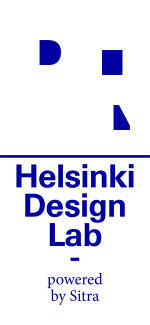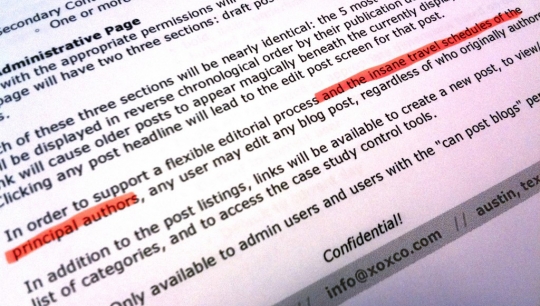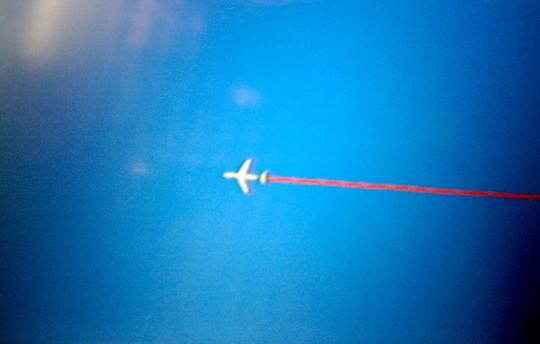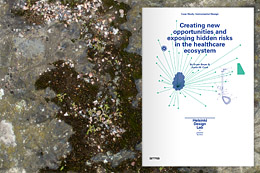Weeknotes
While reviewing the technical spec for our new site I was amused to find this little nugget of humor – as if XOXCO had embedded it to make sure we were paying attention. The ability to be serious but still playful sure does make it easier to slog through technical documents. Thanks for keeping us in check, XOXCO.
Hello from Singapore! The big news is that Helsinki has officially won World Design Capital status for 2012 with its Open Helsinki proposal. We've been chatting with Pekka Timonen off and on as he lead the bid team and it's a real pleasure to congratulate him and everyone on their fantastic work. So while we still have our eyes set on 2010, start marking 2012 on your calendar too.
In honor of the win, the last day of ICSID World Design Congress saw a bit of a Finnish invasion with The mayors of Helsinki and Espoo as well as representatives from the Foreign Ministry, Helsinki Design Week, the Design Forum, Taik, and Marco and I representing Sitra and HDL. Yrjö Sotamaa was so excited he ran around the congress hall with the World Design Capital flag trailing him like a cape.
The format of the congress was interesting for us to see since it has some resonance with how we're preparing HDL 2010. A series of "studios" were organized in the year prior to this week, each with the task of envisioning life in 2050 as it relates to a number of focus areas ranging from agriculture to entertainment. The studio heads took widely different approaches to their work. Some seemed to really get into the format and developed research seminars around their efforts, others seemed to have simply added a few new slides to their default presentation decks. Some presented plausible scenarios rigorously argued and supported with well-cited evidence, others relied more on the whims of the presenter to sketch out a possible future. The degree to which foresight work delivered by foresight experts dominated the two days of conversation that I attended highlighted the extent to which design practice has been focused on current day and immediate-future realities. Designers generally aren't in the habit of proposing floating-car futures any more, are they? Is this good, bad, or gray?
The congress reminded me of Jim Dator's Four Generic Images of the Future, a useful framework that Stuart Candy introduced to me at the University of Hawaii back in March. Stuart underlined a simple fact: if we're not in the habit of imagining the future we have a much harder time manifesting a desirable one. The work that Stuart and his colleagues are doing is essential and seems like ripe territory for collaboration with designers. Thinking about the future gets at ethics in a novel way: if you can imagine anything, why are you imagining this specific thing?
The ethics of design practice was a recurring theme both here in Singapore and last weekend in Torquay. If designers become more involved in projects with a broader social impact – and particularly if they begin to find themselves at the table of political decision makers – the stakes of our work become very high. Personally, I believe that conscientious, talented people generally rise to the challenges they are given and there's nothing better to prove your mettle than to have it tested. Still, I'd like to see the conversation about ethics of design move to a more nuanced level.
The work of groups like Architecture For Humanity is fantastic, but doing pro-bono projects for under-served populations is not the only option for ethical practice. A binary argument between good and evil design practices may do more harm than good by allowing lines to be drawn and sides to be taken that are almost religious in their fervor. In that sense, what I'm lamenting is the lack of ethical debate about how and why we conduct our work rather than ethical judgment.
The conversation took an unexpected turn in Singapore when Chris Bangle and a few others speakers argued that the congress was filled with too much doom and gloom. "You can't push someone to make significant changes in their life," Chris argued, "you have to pull them." In other words, we need to find ways to seduce the planet to live sustainably rather than guilting them into it. Probably need a bit of both, don't you think?
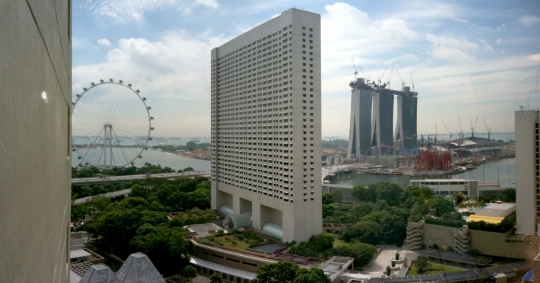
A view over Singapore's developing waterfront snapped in between conference sessions.
Together with the Idea Factory we hosted an HDL dinner with some fantastically interesting people for all over Singapore. Ban Y J – the bon vivant, designer, and entrepreneur behind Stikfas – emphatically spoke about the need help designers break through the "surface tension" between being a garage start up and a viable market entity. In his words, marketing is the key to "raising a hand up and being seen." Particularly in countries with small home markets like Finland and Singapore, breaking through that barrier is critical for long term success. But perhaps even social issues need the right marketing campaign to give them the appropriate chance to survive in this crowded world. Responding to Joanne Yap's introduction of Jurong General Hospital's move from "an illness focus to a wellness focus," Ban asked how you entice people towards wellness? One key strategy is persistent and open community engagement, something Jurong has already started: how many hospitals exist on Facebook before they are entities in the real world?
In the interest of being consistent, I'm checking in with another weeknote even though it's late and I'm tired. Very tired.
This week began in Santiago with Justin and I visiting the Ministry of Housing as well as some other key partners for Elemental. I'm getting more used to having these sorts of conversations inside the halls of government, but for the moment it's still a learning process. We're calibrating the conversation to the audience and getting better at articulating the specific contributions that design has to offer. It feels like an important thing to be figuring out.
Thanks to the international dateline we didn't have a Tuesday. For that matter, thanks to jetlag between Santiago and Sydney, Wednesday was pretty much a waste as well, with the notable exception of a great dinner with Dan Hill of Arup Sydney. We covered everything from urban informatics to fruit bats.
We spent two days with Second Road, digging into their archives and meeting some of their past collaborators and clients, to understand more about the work that they've done with the Australian Taxation Office. It was truly impressive to see the extent to which the ethos of design has seeped into that organization. How many tax offices in the world recruit designers every year? Now we know of at least one!
Among other activities in Helsinki, Adriel spent most of Thursday in an old-folks home learning about what it takes to care for the elderly. Meanwhile Ezra was making visits to Helsinki Police, the Finnish Military, and the Ministry of Education... I know, right?
Over the weekend Justin and I had the pleasure of participating in the Swinburne University Design Thinking conference in Torquay, Australia hosted by the dean of the design faculty, Ken Friedman. It was encouraging to hear the diversity of the conversation and in particular to discover that we're not the only ones who are a bit uncomfortable with the term "design thinking." What about doing? What is design without making? As we increase our appreciation for design as a way of understanding problems let's not forget that design is always obliged to act. This is precisely what we are concerned with at Helsinki Design Lab: how do we best think and do, conceive and act.
One week and eight thousand kilometers later, Justin and I are in Santiago de Chile where we've been the guests of Elemental as we learn about this incredibly unique and exciting project. Elemental is a "do tank" that started as a relatively modest project with the goal of providing new housing to upgrade a portion of the slums in Iquique, Chile. Fast forward to today and Elemental is actively working on projects in multiple countries and expanding from a laser focus on housing to the larger challenge of using "the city as a shortcut to equality."
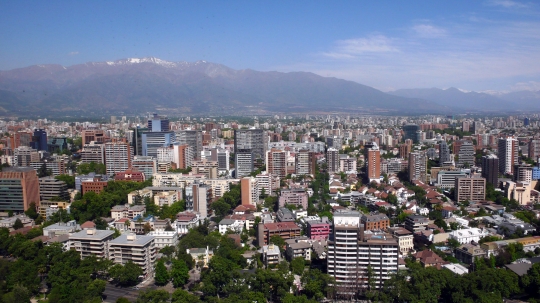
Santiago de Chile as seen from the offices of Elemental.
When we talk about strategic design, there are few people who fit the description better than the team at Elemental. By leaning on expertise from areas such as law, traffic engineering, community organization, economics, and sociology the designers at Elemental are working to develop systemic change within the interlinked problem space of the city. Building new homes for slum dwellers is one thing, but explicitly designing those houses as a tool to bootstrap the owners out of poverty demonstrates an important reframing of the problem, required dedicated follow through, and has delivered much more meaningful and valuable results.
After visiting two of Elemental's projects and speaking with many of the team members my brain is a little saturated. I've been culling through notes and trying to make room for our meetings with the Minister of Housing and the former CEO of Copec, both early sponsors for the Elemental work. Tomorrow is a full day and then we're off to Australia. And yes, this month is heavy on the travel. That's why we support the Carbon Fund.
One thing we heard this week in Chile that echoes previous conversations in many different places: people want to hire design services, they believe in design services, but their procurement systems don't allow it. How do you buy something when your procurement system has no check box for it? How do you invest in a process when you're used to buying products? This is going to be a recurring theme.
By now Adriel and Ezra should be landing in Finland where they each have a busy week of fieldwork for the studio briefs. Our session last Monday was intense but great. One of those moments where a lot of swirling thoughts become more clear – still cloudy, but we're developing a nephology to describe them. The Breslin was kind enough to lend us their mezzanine for a half day meeting. Those people make a mean breakfast.
Speaking of hotels, Minna has been securing hotel rooms for us in Helsinki. Checking these bits of logistics off the list is ever so satisfying.
Slowly we're exploring the viability of the HDLT, a project which we'll share more about when there's something solid to share. Marco has begun due diligence on this in anticipation of first discussions with some key partners next month. He's also lining up some key people for HDL 2010, including our first confirmed studio designer. We're waiting to hear back from another key invite – a speaker for HDL 2010 that would make me pleased as punch to have on board.
As I write this, the lobby here at the ACE hotel in New York is a raucous hive and I'm happy to be tucked into a small but comfortable room upstairs. Justin and I have come to NYC as the second stop on a three week trip that will cover six cities on five continents. This trip is largely about meeting strategic designers around the world and to see their work in context. It's about finding champion projects that make the endeavor of strategic design tangible and accessible to a broader audience.
On Wednesday we met up in London to visit the Helen Hamlyn Centre where Maja and Rama gave us an in-depth introduction to the work they have been doing with DePuy. It was a great way to start the research and it's going to be interesting as we gain a more complete understanding of the project by meeting their clients and other groups who were touched by the design work. One thing is definitely clear: the importance of having a client who advocates for design is immeasurably large.
We also had the chance to drop by live|work and hear about some of their projects, particularly Make It Work done for the Sunderland City Council. With a large population of long term unemployed people in Sunderland live|work were asked to help develop a system that would bring inactivity rates down. By coordinating among the 280+ organizations that already offer services to unemployed and in-need populations, their solution helps match the right kind of support to the needs of the right individual which increases results and decreases costs due to wasted or ineffectual services. This video gives a nice introduction but there's certainly a lot more to dig in to.
Marco made a day trip to London for an interview with a great magazine which we are very excited about, so we took the opportunity to spend a solid five hours taking stock of the past month and planning for the next few ahead of us. These day-long meetings seem to work better the further they are from the office, but I suspect that mostly has to do with the fact that your calendar is marked out-of-office and thus a clutter of meeting invites is avoided. We've been having stock-taking meetings every couple months and it's working well for us as significant markers between which weekly and daily coordination fits in. Set the strategy, adjust regularly.
Despite the fact that it was absolutely gorgeous in New York today Adriel, Ezra, Justin, and I spent the day locked in a conference room hashing out developments in the content of the studio briefs. There are lots of ideas flowing and we're starting to narrow in on some critical dimensions that will bracket each one of the studios. The difficulty in this sort of situation is to strike the right balance between providing a stable enough frame that the studio participants have something to react to, while maintaining enough flexibility that the framework will be durable. We're getting there.
This week: more, more, more. Meetings with friends old and new; a full day of conversation with the Jonathan Rose Companies about their holistic approach to development; a kickoff meeting with the talented people of XOXCO, who are going to be developing the new HDL website; and then heading to the airport and on to South America.
Not that I'm going to spend the weekend without working, but it's really a relief to have made it to Friday. After a long week I barely have a voice left.
Marco has been lining up some overseas speaking gigs in the early part of 2010 as well as revamping our one page description of HDL. The dreaded "one-pager" is an essential tool that we are constantly tweaking – sometimes just a word here or there, sometimes renovating entire paragraphs, or adjusting type and layout. When you only have a page to make your pitch every little bit matters. By next September we'll probably have a ream's worth of outdated one-pagers.
We've been on the phone with Singapore, San Francisco, Cambridge, MA, and London this week. Mostly taking care of last minute arrangements for the trip that Justin and I embark on next Tuesday. We'll host a dinner during the ICSID World Congress in Singapore to introduce some folks there to HDL. If you plan to be at the ICSID event let us know.
Today was also a mini-milestone in that we received two tenders for our new website. There was a third team invited, but they decided to back out of the running. Navigating the procurement process has been a new experience for me personally, but one that I am enjoying. We're treating it like a design problem and that small brain trick makes it easier for a couple of trained architects to figure it out.
We finally stopped talking about the long list of people we would like to have join us and actually started putting it in Excel. A little wrangling, a few formulas, and some conditional cell styling later and we have a useful tool which helps us tweak the mix so that all our bases are covered. Are the genders balanced? Do we have enough non-designers (about 60%, for what it's worth)? Where do our guests hail from?
This gets at a bigger question: when curating a mix of people you're really talking about individuals who each bring with them a unique vocabulary, set of perspectives, and inclinations that represent a larger subculture. It's really an assembly of representatives, in a way. Of course the people make are what matters, but our event is as much about a conference of communities as it is about exchanges on the individual level. Or maybe I've been reading too much Peter Sloterdijk.
How do you buy something that doesn't exist? How do you offer something that there is no market for? This is the territory we've been mulling over at HDL-HQ, where strategic design is the something in question. Jussi Sorsimo from Culminatum stopped by for lunch and described how he has been thinking about the same issues with regards to service design – expanding both the capability and the market for it here in Finland.
One facet of this problem is that governments generally don't have the tools they need to procure this kind of advanced design work. Renovating procurement procedures is a fundamental challenge that many governments and large organizations face. This is a challenge Emily Thomas knows a lot about from her time at the UK Treasury, as I had the pleasure of learning last time I was in London. Having the same conversation in two different contexts, reminds me that some of the most exciting – and powerful – changes are waiting in the most mundane aspects of our lives.
Speaking of procurement, the Invitation to Tender for our new website has been sent out to the three best teams that applied. This is exciting as it means we will be able to begin that work in earnest in a couple weeks. All in all that's about a month and change worth of paperwork before we can sign a contract and get to work.
Marco has been visiting a couple of conferences around town as a keynote speaker talking about the expanded role of design. Justin has been in Brussels meeting with people at the EU. I've been in Ruoholahti preparing the itinerary for our trip for November.
Justin and I will be visiting designers here and there to interview them, their clients, and collaborators about their work. This is going towards an initial crop of case studies that look at the efficacy of design as a strategic tool which helps make sense of complicated problems and works through the implementation of solutions. When it comes to defining what we mean by strategic design, we'd like to do it through example rather than just talk. After this trip, we'll be in a much better position to do that!
We've been doing a lot of reading and some furious scribbling here at HDL HQ.
Fellow Helsinkian Adam Greenfield has been musing about the contemporary city and the sorts of designers needed to make the most of it. The comments are particularly interesting.
GOOD Magazine is slowly revealing their list of 100 "exciting, interesting" people and projects. Favorites there include Project M and Data.gov.
It's a bit old news now, but Business Week has published their annual list of the "Best Design Programs in the World," a term I put in quotations because they've certainly stretched the definition of design for their own purposes. Bruce Nussbaum's introductory post titles it "World's Best Design Thinking Programs" and that seems a far more appropriate title.
Our friends at BERG London together with Timo Arnall have released Immaterials: the ghost in the field, a second video exploring the realm of RFID and nearfield communications. Rarely does one have the opportunity to watch a discourse take large strides, but I get the feeling that's exactly what we're witnessing as Touch/BERG elaborate nearfield communications as something with nuance – in other words, as a material.
Elsewhere, Matt Haughey points us to some tips on building community websites which is a nice compliment to his own on-the-ground post from 2007. These issues are on our minds as we begin to work on the new HDL site.
Adriel, Ezra, and Justin have been making headway on the studio briefs.
I Finally had a chance to talk to colleagues at 2nd Road in Sydney. Despite the bounty of ways to communicate, it never fails that the hardest thing of all is to find an overlap in two busy calendars (let alone four). Justin and I will be visiting them in November to collect information for a case study we are writing about one of their projects. That's part of a longer trip that I'll share more about next week.
This was another week of infrastructure. Most importantly that involved launching a call for participation (and eventually tenders) to build a new website that will be part of HDL. Navigating the public procurement system in Finland has been an interesting learning experience for us, but we're on the right track now and looking forward to being able to actually start work on that project in November. As an aside, anyone interested in a serious innovation challenge would do well to look at procurement policies. Ripe territory there.
On Monday I'll be in Barcelona meeting with the talented people behind Constructing Communication who will be developing the visual identity for the new HDL site. We're excited to work with such talented people.
I finally found a cheap place in Helsinki to have large format drawings plotted out. This was celebrated by printing up a single calendar spanning from October 2009 though September 2010 which yields a new perspective to the project. It's equal parts "wow there are a lot of days between now and then" and "oh crap we have to get moving fast." Marco added the first item: he's taking a well deserved Fall holiday with his family starting next week.
This week was a swirl of names: meeting new faces, lots of meetings all over Helsinki (and Lahti!), and the banal-but-critical task of naming a new project.
To start with the new additions to the team, I'd like to welcome Adriel, Ezra, and Justin to the project. Justin is a Sitra colleague who will now be devoting part of his time to HDL, and Adriel and Ezra are working with us as consultants. It has taken us a while to tweak the machinery here to be able to fold in new talent on a just-in-time basis, but now that infrastructure is set up and it's a huge help.
Adriel, Ezra, and Justin will take the lead on developing studio briefs for three studios that we are organizing for next summer in the lead-up to the main HDL event. The studios will each tackle a specific challenge here in Finland, but the problems are large issues relevant to many places. In other words, they're juicy problems. On the meta level we're looking at public service delivery, education, and a national approach to sustainability. Clearly these are vast topics, so within each one there will be a much more focused question or entry point, but we're still working to identify those. I'll leave it at that and let Adriel, Ezra, and Justin share more about their work once we collectively dig into the content a bit more.
It's an exciting moment because we're finally beginning to lock in dates, focus conversations on specific content, and clearly outline the challenges ahead of us (at least as best as we can see them). More later on these studios and their role as part of HDL, but for now it's enough to say that things are getting busy around here!
Internally we've been laboring to find the right name for a new part of HDL. This summer it became clear that a conference is probably not a strong enough vehicle to achieve our ambitions. Helsinki Design Lab needs to be an engine for fostering strategic design knowledge and capability. There are groups here and there devoting their thinking to strategic design and there are ongoing projects in various parts of the world demonstrating the value of having designers involved in sorting out systemic problems. In short, there's a good bit of chatter, but we want to see more. A conference that happens every two years is a good start but what else can we do?
We have lots of ideas... but I'll leave it at that for now and invite any suggestions you may have.
